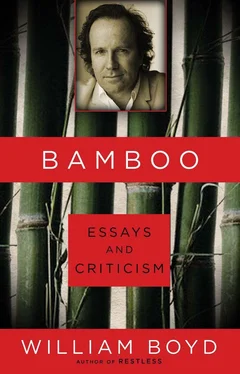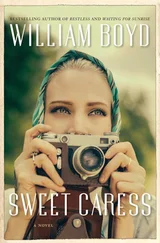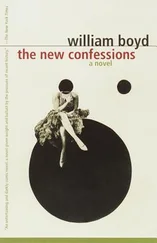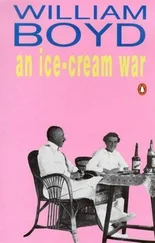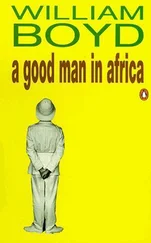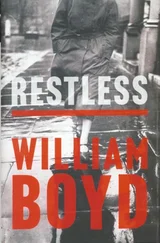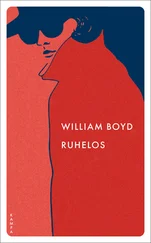N. Narrative
Not so much narrative painting, as we would commonly understand it, but a vague concept of story emerging, tying the individual paintings together, however loosely. Andrews’s practice was to work out a concept or an idea over a series of canvases: the party paintings, “Lights,” “School,” the deerstalking paintings, Ayers Rock, the final Thames paintings. One can’t easily trace the exact connections, but the ghost of a narrative line is teasingly there (from the Colony Room paintings to All Night Long , for example), begging the questions of interrelationships, of sequence, of deciphering. Biographical details help (for example, in the deerstalking sequence, we know that Andrews was not a natural deerstalker — his days out on the hill were fraught) but in the end the links between the paintings remain tenuous. Trying to tell the exact “story” of the progression of “Lights,” for example, is an open invitation to pretentiousness.
O. Odd Ones Out
I don’t like Andrews’s painting Cabin . The perspective of the plane is wrong, yet the perspective of the coastal city below it is perfect. I know there were meant to be faces at the windows, and that he abandoned the idea of placing them there, but any one of the small portrait studies that he prepared for this is better than the finished painting. I also don’t like his landscape Daylesford , a grand house seen in its manicured park (a commission?). It is expertly painted but it seems dead — the oil paint managing somehow to reproduce here the dull flatness of acrylic.
P. Photography
Andrews used photography extensively in his painting, either as a spur to invention or else as a precise model for the finished canvas. The deerstalking pictures, for example, are almost identical to photographs that Andrews had taken of himself and the gamekeeper during the stalk. Working this way from photographs seems to me to be entirely acceptable. To see both the paintings and the photographic originals (as one did at the Tate Britain retrospective) serves only to remind you of the artistic gulf between a photograph and a painting.
Q. Q-tip
Andrews often used Q-tips when painting. To blur? To smear? To lift off? It is a useful symbol of his fastidiousness, it seems to me, a sign of his precision. He also used to bang the canvas: ball up tightly a piece of rag, grip the canvas edge with his left hand and bang the rag-ball firmly on the painted surface, four or five times. This would randomly disperse the paint but it would also drive the pigment deep into the weave of the canvas.
R. Rimbaud
Arthur Rimbaud appears in the middle of The Deer Park —the title taken from Norman Mailer’s novel. William Feaver has taken a photograph of some bookshelves in Andrews’s studio. They make interesting reading — other people’s books tell you as much about them as do the paintings hanging on their walls. In this selection there is a diverse group of writers: Jung, R. D. Laing, de Sade, William Burroughs, Opium and the Romantic Imagination , lots of Mailer, Paul Scott, Isherwood, Sylvia Plath and other poetry. We know enough about Andrews to see this reading matter as typical of his tastes and interests. But it is the fact that he was an avid reader (by no means true of all painters) that is intriguing — especially to a writer. Rimbaud gave the title to “Lights” (a free translation of Les Illuminations) . And Auden is present too in the title of Andrews’s prize-winning painting at the Slade, August for the People (1952). “August for the people and their favourite islands”—to give the line in full. I’ve always thought another line of Auden could serve very well for the “Lights” series: “As the hawk sees it, or the helmeted airman.” Early Auden was obsessed with the view from above — unemotional, objective, clear-eyed. This is the point of view of the balloonist too: silent, often unnoticed by those on the ground, drifting high above the earth.
S. Silk-screen
The portraits in the three Good and Bad at Games paintings are set against a silk-screened photograph of an office block. Andrews had this done by an industrial silk-screener. There is something about the process of silk-screening that is very typical of the look of an Andrews painting. It seems to me he often strove to paint in a way that made the finished result look silk-screened (the spray gun). And of course he used stencils extensively, particularly in the “School” series. I think he must have used stencils in the deerstalking pictures also. The tiny running deer are so exquisitely done, the outline of their antlers so perfectly set against the misty hills in the background that I feel sure he must have stencilled them on. This doesn’t matter at all, of course. Even in the fish paintings, where the stencil was a way of (a) saving him from having to paint the same fish twenty times and (b) allowing him to achieve the blurry complexities of dark and light pigmentation of fish scales (the pike, for instance), there are examples of precise and beautiful brushwork — stippling, slashing, shading. Look at the foreground grass in the painting Running with the Deer . Can that tough, tussocky, windlashed highland grass ever have been painted better?
T. Thames
Andrews’s last series of paintings, the three Thames paintings, are a fitting conclusion to his life and work. Everything tried before seems to come together here. This is both a real place and a symbol with a great freight of allusion (Sweet Thames, the Styx, the flux of life). The innovation in these canvases is in the use of an almost tidal manipulation of paint and turpentine to replicate the daily ebb and flow of the river itself. Andrews would lay his painting flat on the floor, pour on his mix of turps and oil and push the fluid around with the help of a powerful hairdryer. The effect is astonishing. The accumulation of grit (sand and sediment were added to the colour) and the way the mix happened to swirl and settle on the canvas mean that the effect of light on the finished painting, and the viewer’s position, make the pictures endlessly changeable. Both The Thames at Low Tide and Thames Painting: The Estuary are great, dark, brooding, moving paintings — late Beethoven quartet paintings; “Four Last Songs” paintings.
U. Unfinished
Andrews often left his paintings with an unfinished look to them ( The Deer Park , for example). But his death in 1995 meant that his last painting in the Thames series, Source of the Thames , was unfinishable. We know from photographs he took how to interpret the possible final form the painting might have taken: a stream flowing out of a dense clump of undergrowth, widening and thickening, the water surface reflecting a blue sky with clouds. But as it stands now it is the most abstract of all his work, and the paint surface is, here and there, clotted with grass stems and seeds gathered from the banks of the river. If the other two paintings are reliable guides, the fluid image would have been fixed somehow with the addition of recognizable branches or leafage. But one sees all the same, in this forcibly arrested work, all the natural atavistic energies of a painter who would later bring his calculating, sophisticated, painterly mind to bear on the subject. He would have given scale — which is lacking at the moment. Look at the figures in The Estuary or In Shade, Foot of Olga Gorge (perhaps my favourite Ayers Rock painting) to get a glimmering of where Source of the Thames might have gone.
V. A View from Uamh Mhor
This huge landscape is another tour de force . Anyone who knows the wilder parts of Scotland will testify to its refulgent veracity. Andrews, reputedly overdosed on the mineral brilliances of Ayers Rock and the palette of rusts, reds, ochres and yellows it compelled, longed for the sopping, airy greenness of remote Perthshire, and this picture is painted with a freedom and brio that are the opposite of the Ayers Rock paintings. Paint dribbles, canvas shows through, the confident rapid passage of the brush is everywhere in evidence. Scotland inspired Andrews — not just in the deerstalking series but also in the bravura oil sketches of the views around Glenartney where he holidayed each summer. His Edinburgh (Old Town) captures that city’s ancient, dour, unique atmosphere with perfect palpability. You can feel the cold scowthering rain coming in off the Firth of Forth.
Читать дальше
